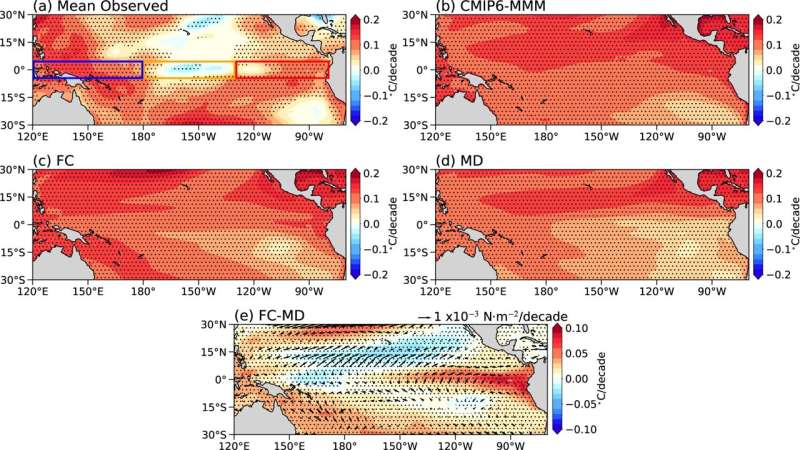In the intricate dance of Earth’s climate system, the Pacific Ocean plays a starring role, acting as a crucial regulator of global temperature trends. Understanding the complex interplay between wind and water dynamics in the equatorial Pacific is essential for refining climate models and accurately predicting future climate scenarios. A groundbreaking study led by researchers from North Carolina State University and Duke University sheds light on this intricate relationship, revealing a missing piece of the modeling puzzle that could significantly impact our understanding of global warming trends.
Published in the prestigious journal Nature Communications, the study highlights the critical role of wind-driven ocean currents in shaping warming patterns in the tropical Pacific. Sarah Larson, assistant professor of marine, Earth, and atmospheric sciences at NC State, emphasizes the Pacific Ocean’s pivotal role in dictating global climate dynamics. “If the Pacific warms quickly, for example, it can accelerate warming globally. Similarly, if it warms at a slower pace, this can slow down our rate of global warming,” she explains.
The study focuses on the observed warming pattern in the tropical Pacific, characterized by contrasting temperature trends in different regions. While eastern and western Pacific waters experience warming, a slight cooling effect is observed in the central Pacific near the equator. When attempting to replicate this observed pattern in climate models, researchers encountered significant discrepancies, prompting a closer examination of the underlying processes.
“We’re trying to figure out what physical processes in the models we can attribute this discrepancy to, so we looked at wind,” Larson says. By running two distinct models—one accounting for changes in wind patterns in response to external forcing and another “decoupled” model with fixed pre-industrial wind conditions—the researchers uncovered crucial insights into the role of wind-driven ocean currents in shaping warming trends.
The results reveal that changes in wind patterns, particularly westerly winds triggered by human-induced warming, play a pivotal role in redistributing warm water in the tropical Pacific. Shineng Hu, assistant professor of Earth and climate science at Duke University, elaborates on this process, citing the example of the Galápagos Islands. “The ocean water to the north of the equator is warmer than the equatorial water there. We found that the human-induced warming triggered westerly winds to the north of Galápagos Islands, which in turn transported the warm water beneath southward,” he explains.
Importantly, the study underscores the urgent need to improve the simulation of equatorial oceanic processes and thermal structures in climate models to enhance accuracy in future climate projections. “How the winds react to human-induced forcing like greenhouse gases is incredibly important to determining how quickly the tropical Pacific warms,” Larson emphasizes.
By unraveling the intricate relationship between wind and water dynamics in the equatorial Pacific, this study provides valuable insights that will inform the development of more accurate climate models and facilitate more reliable climate projections. As we strive to mitigate the impacts of climate change, understanding the nuances of Earth’s climate system becomes increasingly crucial, paving the way for informed decision-making and effective climate policy.
